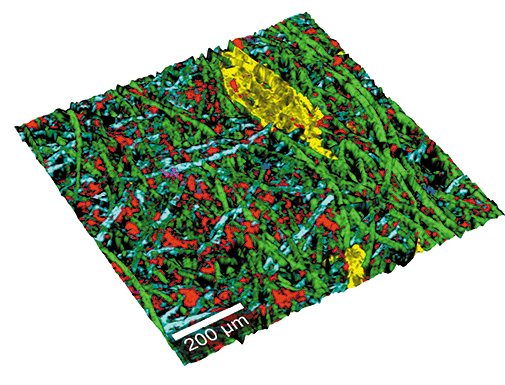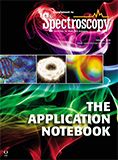TrueSurface—The Original Topographic Raman Imaging System
Application Notebook
Confocal Raman microscopy is a versatile, nondestructive and fast method for studying the chemical composition of living and non-living material. It is used to identify and localize not only the molecules in a specimen but also to detect their quantity, degree of crystallinity, and crystal symmetry.
However, not all samples have a flat and smooth surface. To acquire Raman images from samples with rough, inclined, or irregularly-shaped surfaces, WITec invented topographic Raman imaging.
With the TrueSurface™ option, Raman spectra are acquired from precisely along a surface or at a set, user-defined distance from a surface. As the sensor actively monitors and maintains a set distance between the objective and sample surface, its closed-loop operation can compensate for any variations during measurements with long integration times. This keeps the measurement area in constant focus and produces sharp confocal Raman images with sub-micrometer resolution. Topographic Raman imaging also allows the distribution of chemical components within the sample to be visualized in three dimensions.

Figure 1: (a) Topographic Raman image of a pharmaceutical pain tablet containing acetylsalicylic acid, isobutylphenylpropionic acid, caffeine, and auxiliary substances shows the distribution of the components along the tablet's curved surface. (b) Corresponding spectra of the tablet's ingredients.
Here we demonstrate the technique's capabilities by carrying out Raman imaging of the surface of a curved pharmaceutical tablet (Figure 1) and of cellulose fibers in paper (Figure 2).

Figure 2: Confocal Raman image of cellulose fibers in paper. Fibers of different orientation are marked with green and blue.
Investigations on pharmaceutical tablet ingredients, geological samples, composite emulsions, complex semiconductor structures, organic material, and many other applications can benefit from the ease of use, accelerated workflow, and methodological advantages provided by the new TrueSurface™.

WITec GmbH
Lise-Meitner-Stra e 6, 89081 Ulm, Germany
tel. +49 (0)731 140 700, fax +49 (0)731 140 70 200
Website: www.witec.de

New Study Reveals Insights into Phenol’s Behavior in Ice
April 16th 2025A new study published in Spectrochimica Acta Part A by Dominik Heger and colleagues at Masaryk University reveals that phenol's photophysical properties change significantly when frozen, potentially enabling its breakdown by sunlight in icy environments.
Advanced Raman Spectroscopy Method Boosts Precision in Drug Component Detection
April 7th 2025Researchers in China have developed a rapid, non-destructive Raman spectroscopy method that accurately detects active components in complex drug formulations by combining advanced algorithms to eliminate noise and fluorescence interference.